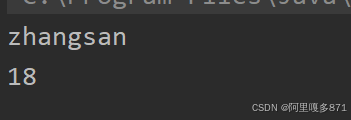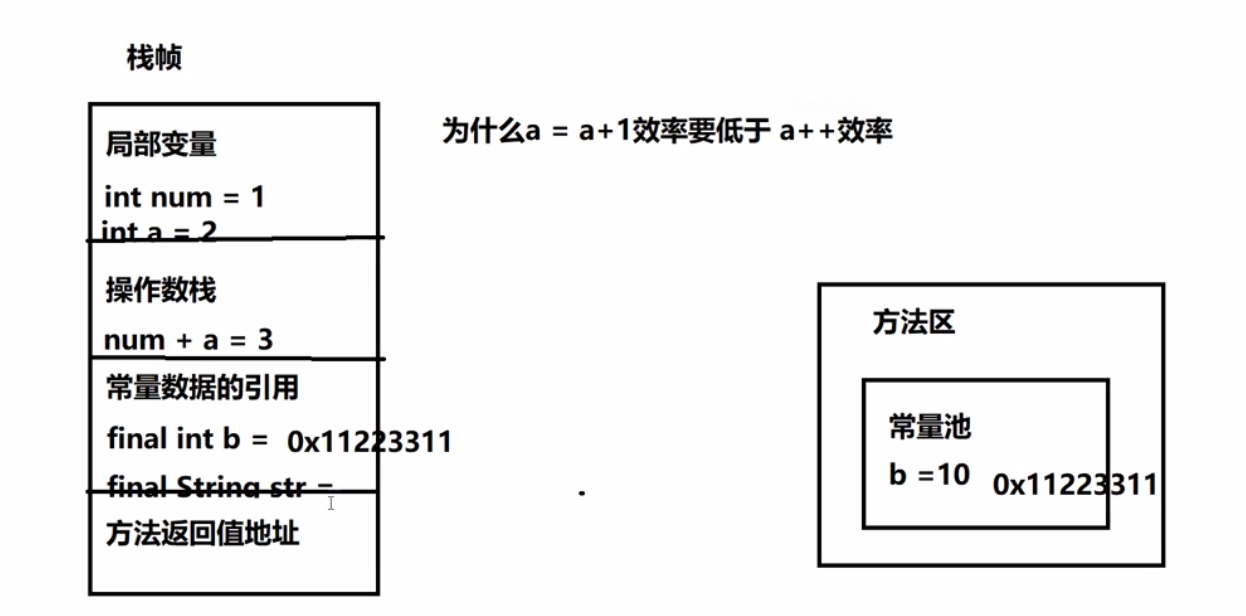1.SpringIoc简单注解
1.1 Autowired
package com.qcby.iocdemo1.annotation;
import java.lang.annotation.ElementType;
import java.lang.annotation.Retention;
import java.lang.annotation.RetentionPolicy;
import java.lang.annotation.Target;
@Target(ElementType.FIELD)
@Retention(RetentionPolicy.RUNTIME)
public @interface Autowired {
}
1.2 Component
package com.qcby.iocdemo1.annotation;
import java.lang.annotation.ElementType;
import java.lang.annotation.Retention;
import java.lang.annotation.RetentionPolicy;
import java.lang.annotation.Target;
@Target(ElementType.TYPE)
@Retention(RetentionPolicy.RUNTIME)
public @interface Component {
}
2.创建一个controller和一个UserService对象,为后面案例展示提供方便
2.1 controller
package com.qcby.iocdemo1.entity;
import com.qcby.iocdemo1.annotation.Autowired;
import com.qcby.iocdemo1.annotation.Component;
@Component
public class TestController {
@Autowired
private UserService userService;
public void test(){
userService.addUser("zhangsan",18);
}
}
2.2 UserService
package com.qcby.iocdemo1.entity;
import com.qcby.iocdemo1.annotation.Component;
@Component
public class UserService {
public void addUser(String name, int age) {
System.out.println(name);
System.out.println(age);
}
}
3.Ioc实现类
package com.qcby.iocdemo1.ioc;
import com.qcby.iocdemo1.annotation.Autowired;
import com.qcby.iocdemo1.annotation.Component;
import jdk.nashorn.internal.ir.ContinueNode;
import org.springframework.objenesis.instantiator.basic.NewInstanceInstantiator;
import java.beans.Beans;
import java.io.File;
import java.io.FileNotFoundException;
import java.lang.annotation.Annotation;
import java.lang.reflect.Field;
import java.util.*;
public class SpringIOC {
private String basePath;
private String basePackage;
private List<String> beanNames;
private List<String> filePaths;
private Map<String, Object> beans = new HashMap<>();
private void initPath() {
//设置三个包所在文件夹的绝对路径
basePath = "D:\\gitcode\\IocDemo1\\src\\main\\java\\com\\qcby\\iocdemo1\\";
//设置包名
basePackage = "com.qcby.iocdemo1";
}
private void scan() throws FileNotFoundException {
//创建文件夹对象
File file = new File(basePath);
//filePaths集合放置的是文件的绝对路径
filePaths = new ArrayList<>();
if (file.exists()) {
Queue<File> queue = new LinkedList<>();
//放文件夹下的子文件夹及文件
queue.add(file);
while (!queue.isEmpty()) {
File poll = queue.poll();
//队首文件出队
if (poll.isDirectory()) {
//判断是否为文件夹,如果是把文件夹里的子文件夹和文件放入队列
File[] files = poll.listFiles();
for (File file1 : files) {
queue.add(file1);
}
} else {
filePaths.add(poll.getPath());
//如果是文件把文件的路径放入filepaths
}
}
} else {
throw new FileNotFoundException(basePath + "没有找到");
}
}
private void initBeanNames() {
for (String s : filePaths) {
//遍历filepaths
String replace = s.replace(basePath, "");
//将每个的前缀变成"",变成相对路径
if (replace.endsWith(".java")) {
replace = replace.substring(0, replace.length() - 5);
//文件名以.java结尾的文件,去掉后缀
}
char[] chars = replace.toCharArray();
for (int i = 0; i < chars.length; i++) {
if (chars[i] == '\\') {
chars[i] = '.';
}
}
//将文件路径的/变成.
beanNames.add(basePackage + "." + new String(chars));
//将路径以保命+文件相对路径的形式添加到路径集合中
}
}
public void initBeans(){
for (String beanName : beanNames) {
try {
Class<?> aClass = Class.forName(beanName);
//通过路径获取每个类的对象
Annotation[] declaredAnnotations = aClass.getDeclaredAnnotations();
//获取每个对类的注解
for (Annotation declaredAnnotation : declaredAnnotations) {
//遍历注解,找到注解为component的注解
if (declaredAnnotation instanceof Component) {
//有的话,把类对象转化为实例对象,按照路径:对象的形式加入beans集合中
Object o = aClass.newInstance();
beans.put(aClass.getName(), o);
}
}
} catch (Exception e) {
e.printStackTrace();
}
}
for (Map.Entry<String, Object> entry : beans.entrySet()) {
//遍历每一个路径:对象的键值对
Field[] declaredFields = entry.getValue().getClass().getDeclaredFields();
//获取该类的属性对象
for (Field field : declaredFields) {
Annotation[] declaredAnnotations = field.getDeclaredAnnotations();
//遍历属性对象,获取属性上的注解
for (Annotation annotation : declaredAnnotations) {
//遍历注解,判断该注解是否为autowired
if (annotation instanceof Autowired) {
//获取该属性的类型的名称
String name = field.getType().getName();
//找到该数据类型的实例对象
Object o = beans.get(name);
field.setAccessible(true);
try {
//把实例对象放入该属性中
field.set(entry.getValue(), o);
} catch (Exception e) {
e.printStackTrace();
}
}
}
}
}
}
public SpringIOC(){
initPath();
try {
scan();
}catch (FileNotFoundException e){
e.printStackTrace();
}
beanNames=new ArrayList<>();
initBeanNames();
}
public Object getInstance(String beanName){
return beans.get(beanName);
}
}
4.使用test测试
SpringIOC springIOC=new SpringIOC();
springIOC.initBeans();
TestController instance = (TestController)springIOC.getInstance(TestController.class.getName());
instance.test();
5.运行结果




















